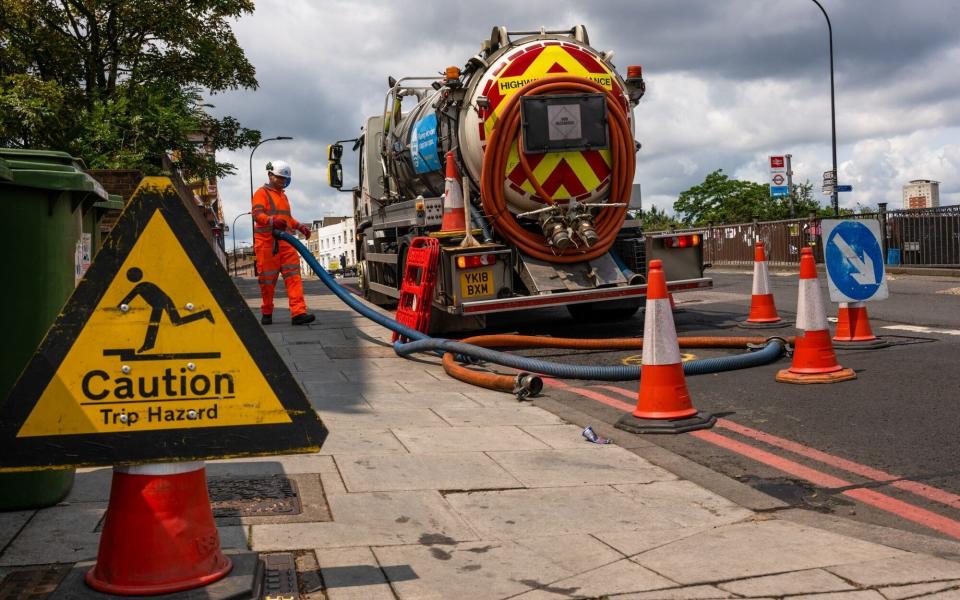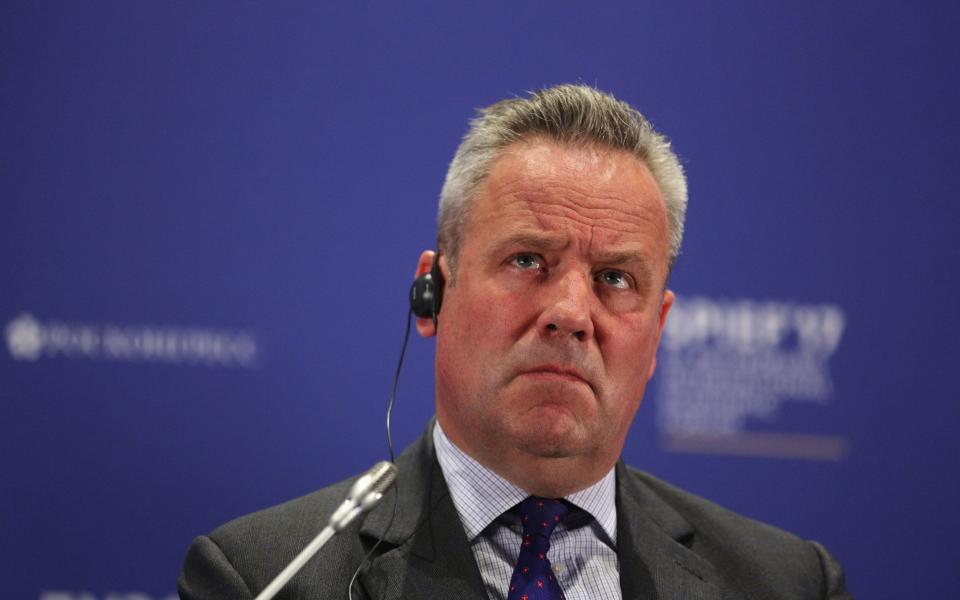The £14bn debt crisis that threatens to sink Thames Water

This article was first published on January 28 and has since been updated.
An early sign of the crisis about to engulf Thames Water came when part of its £14bn debt pile crashed to a record new low.
Fund managers who own Thames debt began dumping some of its riskiest IOUs at the start of the year over fears the company could fail to repay the debts.
A bond linked to an entity in Thames’ byzantine debt structure has crashed by 20pc in value over the last two weeks of January. The bond, which is linked to a company called Thames Water (Kemble) Finance, plunged to 40p in the pound, down from a price of 50p. They were worth as much as 87p six months earlier.
While having no immediate impact on the group, or consumers, the bond market tremors were a sign investors believe that Thames Water could be heading for a further financial squeeze.
“The market is telling you that there is a high probability that these bonds don’t get repaid,” says one investor.
Thames is Britain’s largest water company with 15m customers. But the utility giant has been hamstrung in recent years by its complex debt structure.
It has £14bn of debts against £19bn of equity, according to most recent figures, meaning it has borrowed almost as much as investors have put in. This high leverage makes the company vulnerable to the whims of investors and banks.
Rising interest rates have put intense pressure on Thames as its debt repayment costs have increased rapidly.
Thames Water was handed a £750m lifeline from shareholders in July to stave off nationalisation, but bosses have admitted the company may need £2.5bn between now and 2030 to remain viable. Will it be able to raise the money?
As well as financial concerns, campaigners such as former Undertones frontman Feargal Sharkey have also taken aim at the company over its environmental record.
Figures released last week showed the amount of sewage Thames dumped in London’s rivers rose by nearly five times last year versus 2022.
The gloomy backdrop underscores the challenges facing chairman Sir Adrian Montague and new Thames chief executive Chris Weston.
As the architect of New Labour’s Private Finance Initiatives (PFI) projects in the late 1990s, Sir Adrian helped usher in an era when deep-pocketed private investors ploughed money into public services.
Known as a fixer in Whitehall, Sir Adrian was parachuted into Thames in June to draw on his deep experience balancing the twin demands of the City and Westminster.
His experience will be valuable as Thames faces pressure from regulators, politicians, debtors, shareholders and campaigners alike.
Weston was the former chief executive of Aggreko and is well regarded in City circles for leading the power group successfully for seven years.
In a sign of intent last week, the duo moved to reshuffle a small portion of Thames’ debt mountain.

The company raised £850m of debt from investors at the same time as buying back £500m of existing debt. Orders for the bond were oversubscribed.
A bond investor said the sudden refinancing showed Thames was trying to get on the “front foot” to build momentum in the market ahead of a difficult year.
“It does show a degree of confidence at the regulated level. If it had not been subscribed to, it would have been a real kick in the teeth,” they said.
Tellingly, the bonds were priced at a more attractive price than they could have been, offering a small discount to the value of other Thames bonds.
TwentyFour Asset Management partner Gordon Shannon said the discount was an attempt to lift some of the gloom over the Thames name.
“Clearly Thames are giving a level of concession because there’s more than a little bit of a stink around the name,” he says.
However, the debt reshuffle is relatively small beer.
Shannon says: “While issuing longer dated debt is helpful at the margin in pushing some of their issues down the road, what Thames really needs is a fresh equity injection.”
Thames has a complex structure, with a regulated operating company called Thames Water Utilities running the network and several companies dubbed Kemble – named after the source of the River Thames – raising money to invest in the network by borrowing from bond markets.
Money flows back from Thames to Kemble but there are concerns about how much will trickle up in future. Ofwat launched a recent investigation into a £37.5m dividend payment that may have flouted regulations.
The bond slide last week signals that markets fear payments to bondholders could be choked off.
A Thames Water spokesperson said: “Thames Water Utilities is in a solid financial position and has supportive shareholders. Our shareholders have already invested £500m of new equity in March 2023. In addition, they have agreed conditionally to provide a further £750m in new equity during the remainder of AMP7.
“The conditions to be satisfied include shareholder approval of the three-year refocused turnaround that will deliver targeted performance improvements for customers and the environment, and a PR24 business plan that has regulatory support.
“Our shareholders have also confirmed the expected need for additional equity funding, in the region of £2.5bn in AMP8. In aggregate, this would equate to total equity investment of £3.75bn, the largest equity support package ever proposed in the UK water sector.”
With shareholders like USS and OMERS having already ploughed £750m into the group over the summer, the question remains whether they will ride to the rescue once again or throw in the towel. Both groups have written down the value of their stakes in the utility recently. This week’s bond slide may prompt a further reassessment of Thames’ value.
One solution to the crunch may be to sell off some assets, such as the naming and branding rights for “Thames Water”, or to sell off swathes of UK land owned.
Thames licences its logo to companies such as HomeServe, so there also could be scope to make money from a sale. Sir Adrian and Weston will be weighing up how to fix the stink around Thames.
“It’s basically a game of chicken between the Government and the shareholders now on allowed returns versus the need for investment,” says the bondholder.
Thames needs to fix its leaks quickly.
